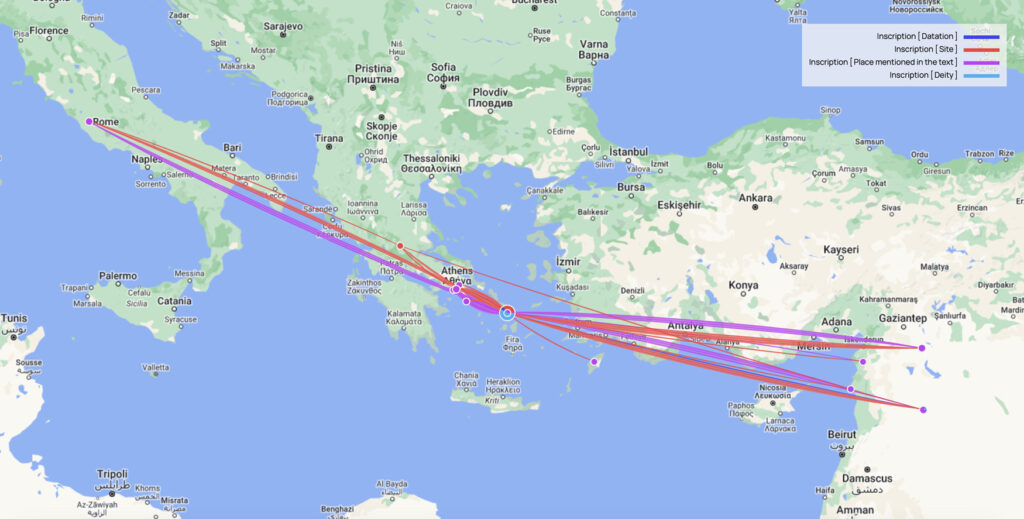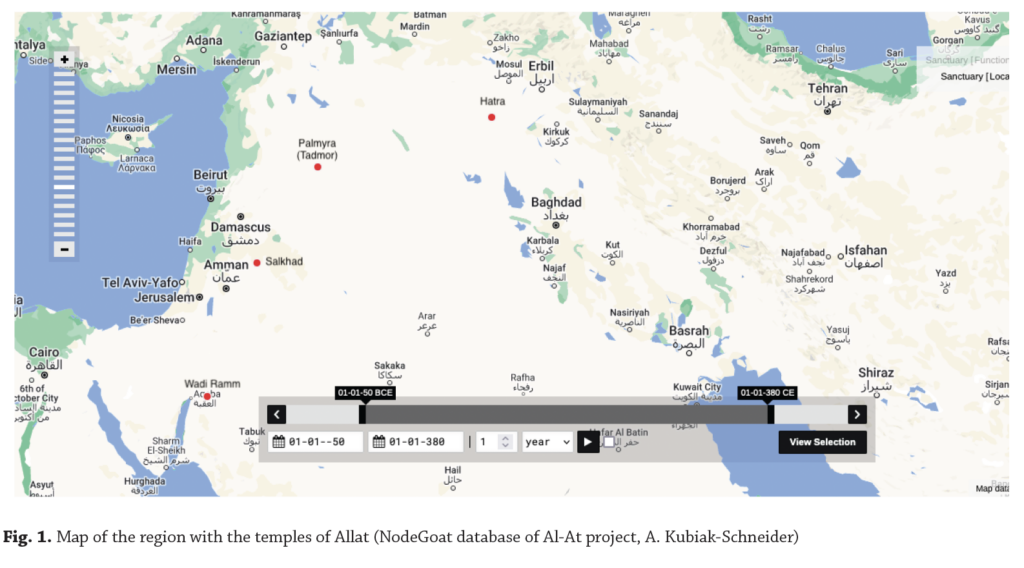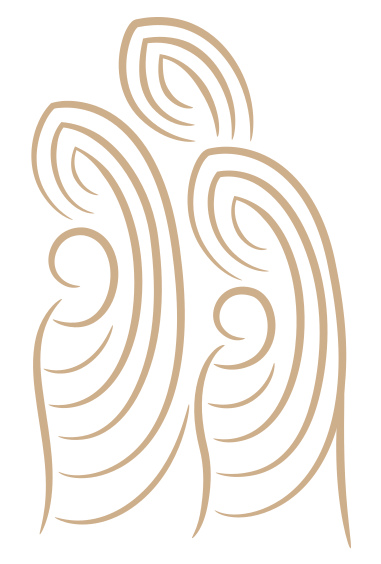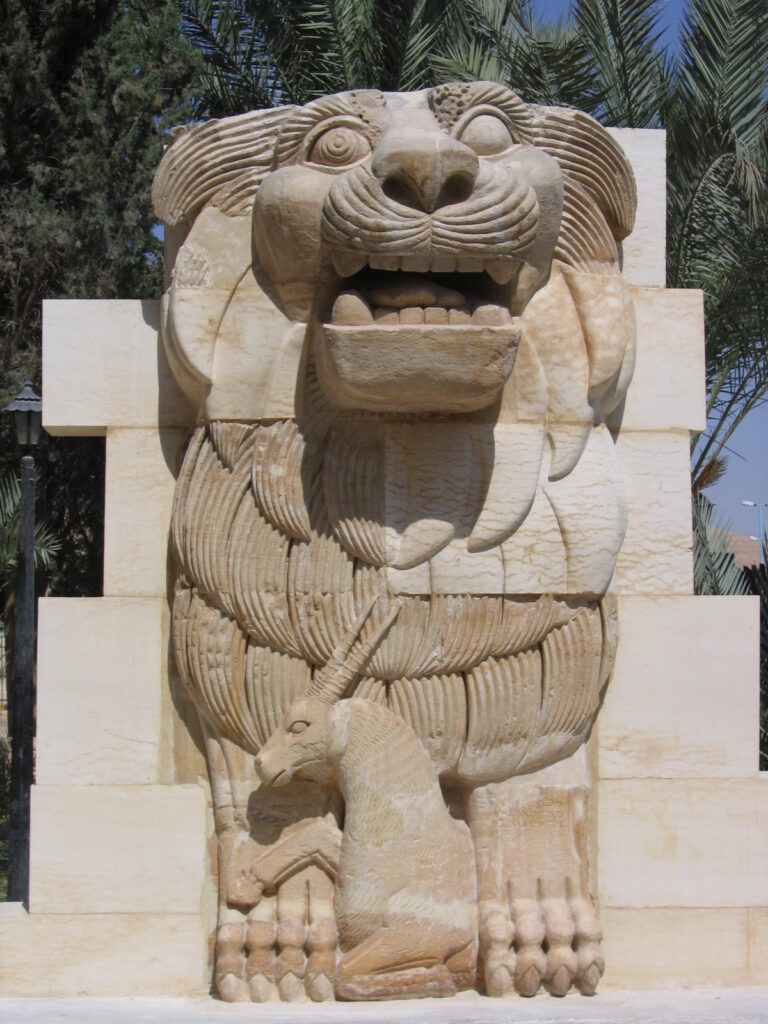Publications
Datasets Available at Zenodo.org
If you are interested in re-using our datasets, there is a good news: the data is available on zenodo.org to download and to check it out. See here!
Goats and Goddesses
Goats and Goddesses is a project milestone! We published our results achieved through the use of the NodeGoat tool which permitted us to gather the data and visualise it in various ways. If you want to learn how the digital tools help in understanding ancient religions in the spatial and social dimensions, this paper is right for you!

Allat and the Desert
Publication concerning the cult of Allat resulting from mapping inscriptions.
Allat and the Desert This paper offers an approach to the worship of Allāt through the concept of the geography of religions and ritual landscape. It combines the epigraphic, archaeological and geographical evidence to present the goddess as the protectress of the borderland with a focus on the rocky deserts and drylands. For the first time it offers a study not through the “Arabic”, ethnic, approach, but through the topography of the sacred places dedicated to the goddess. The paper focuses on the emplacement of the temples of Allāt in Palmyra, Salkhad, Wadi Ramm and Hatra as well as on the location of the Northern Arabian inscriptions (Safaitic and Dadanitic) on the rocks. The paper emphasizes the role of the desert in the perception of the divine. Published in March 2024 in the Journal of Ancient History and Archaeology

This paper presents first the results of my own research from the last decade focused on the religious terminology and complex analysis of the votive dedications from Palmyra. These studies led to the further exploration of Palmyra in its broader cultural context revealing the connections to the Mesopotamian and Persian (both Achaemenid and Parthian) cultures. New projects described as a third part of this paper continue the work on the deep contextualization as well as focusing on the cultic agents, their role and function in the religious practices and in the societies. In the conclusion, it is proposed to involve more the digital tools in the research on Palmyra like geo-mapping, creating open-access databases, and studying networks. This is the highlight of the Al-At project, an initial paper submitted in the beginning of 2023.

Rules of the House (of Gods)
Publication concerning the work package about the administration and organisation of cults.
Rules of the House (of Gods). Electrum 30 (2023)The epigraphic record from Palmyra brings light on the organization of the temples: personnel, management of feasts, economy and on the ritual practices towards certain deities like Allat and Shai ‘al-Qaum. These texts were previously called in the research literature “sacred laws”and what the scholarly debate nowadays labels with the term “ritual norms.”The aim of this paper, divided on the temple economy and personnel, and ritual behavior, is to understand through the scraps of information the administration of the Palmyrene temples and processes which shaped the life in the places of worship.

Sacred Meals in Hatra and Nippur in late Parthian times
In co-authorship with dr Bernhard Schneider, published in Przegląd Religioznawczy 2/288 (2023). The common meal with deities comprises one of the most popular religious rituals. It results from the popularity of offerings composed with such alimentary items like meat, bread, fruits, wine, oil, etc. This paper deals with the sacred dimension of the cultic banquets on the example of epigraphical and archaeological evidence. As case-studies are presented two cities: the Northern Mesopotamian city of Hatra (ca. 290 km northwest of Baghdad) and the Southern Mesopotamian city of Nippur (ca. 150 km southeast of Baghdad). The case of Hatrene sacral architecture together with written material in the local dialect of Aramaic defines very similar structures in Nippur as sacred space for cultic meals and helps to reconstruct the practices in the period from 1st c. to the mid-3rd century CE.
Hymns in Stone?
Palmyrene Dedications to "Blessed-be-his-name-forever" at Melammu
New Publication on the dedications from Palmyra in: Robert Rollinger, Irene Madreiter, Martin Lang and Cinzia Pappi (eds.), The Intellectual Heritage of the Ancient Near East. Proceedings of the 64th Rencontre Assyriologique Internationale and the 12th Melammu Symposium, University of Innsbruck, July 16-20, 2018, (Österreichische Akademie der Wissenschaften philosophisch historische Klasse, Sitzungsberichte 924. Band, Melammu Symposia 12), Vienna: Austrian Academy of Sciences Press 2023. ISBN 978-3-7001-8574-1, pp. 309 – 322.